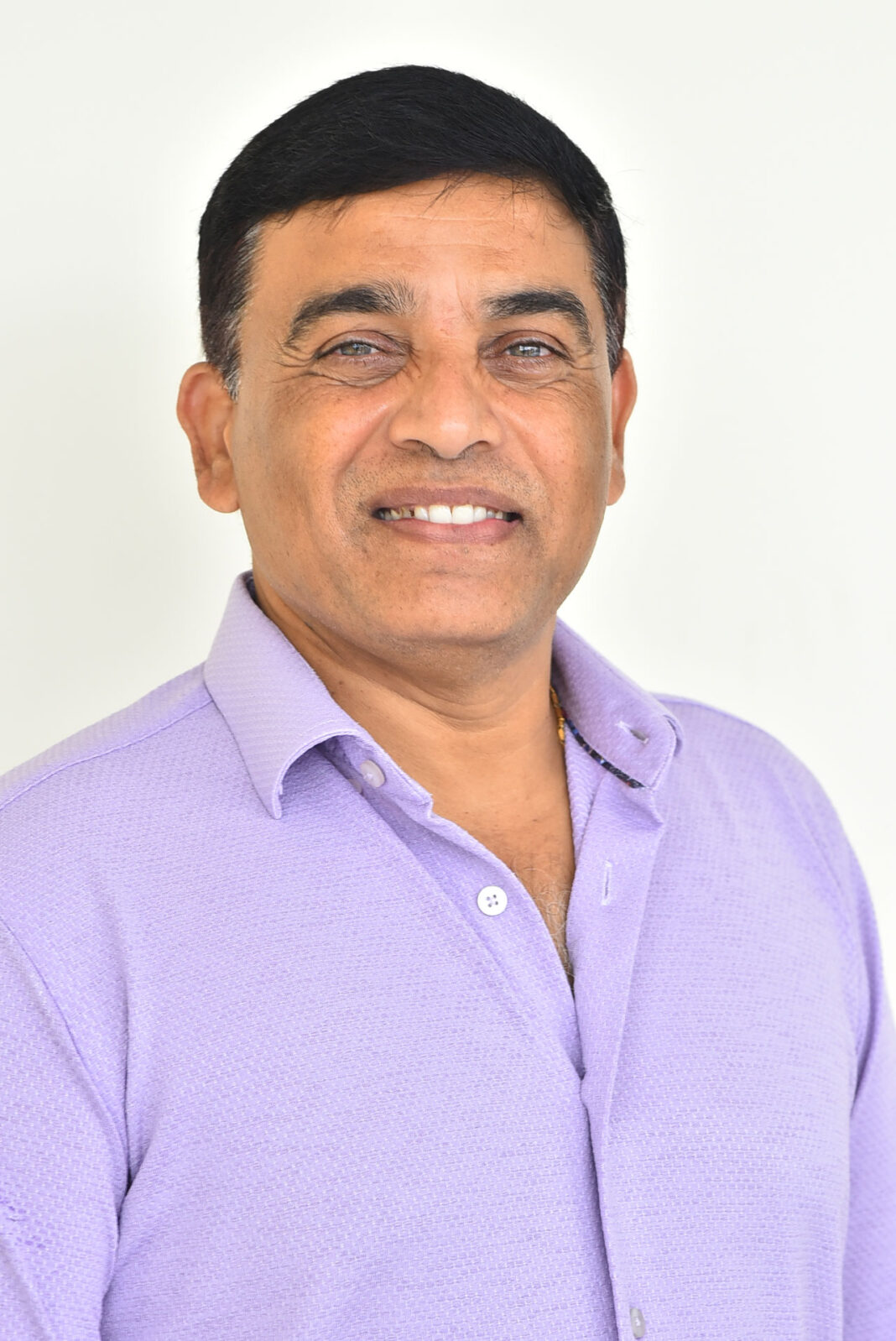From running an automobile spare parts shop to becoming one of the most influential names in Telugu cinema, Venkataramana Reddy — popularly known as Dil Raju — has carved a legendary path in the industry. He began his journey as a distributor and later turned producer, making his mark with the blockbuster Dil, followed by a series of successful films like Arya, Bhadra, and over 55 more. Known for his unwavering commitment and straightforward nature, Dil Raju is a man of his word — once he gives a commitment, he never steps back.
While some may mistake his serious demeanor for attitude upon first meeting him, it doesn’t take long to realise he is someone who speaks with clarity and warmth. His sincerity often leaves a lasting impression, and those who connect with him tend to remain close for life. In an industry full of fierce competition, Dil Raju has not only made his mark but also built lasting relationships across the board. Today, he stands tall not only as a successful producer but also as the Chairman of the Telangana State Film Development Corporation.
In a candid conversation with The Pioneer’s Suresh Kavirayani, Dil Raju opens up about his humble beginnings, the highs and lows of his career, personal milestones, and what truly drives him.
The hyperactive, pampered kid
I was born on December 18, 1970, in Narsingpally, Nizamabad. I studied in Narsingpally until Class 3 and then moved to Mudakpally for Class 10. In between, I studied Class 6 and Class 9 in Macherla, my grandmother’s village. There was only one high school nearby, in Mudakpally, and I used to go there with six of my friends.
We are three brothers—Narasimha Reddy (elder), Vijayasimha Reddy (second elder), and myself, Venkataramana Reddy.
We had a very big house in our village, built on one acre. We were like a Zamindar family. My parents are Shyam Sundar Reddy and Prameela. Being the youngest, I was pampered a lot and was hyperactive as a kid. Shirish (now my partner) is my uncle’s son, and his younger brother Harish was my classmate in school. When we built the Venkateswara Temple in Nizamabad, our Class 10 group reunited for the occasion.
Vetagadu—My First Film
I was interested in films from childhood. The first movie I remember watching was ‘Vetagadu’, starring NTR and Sridevi, in 1979. I cycled nearly 12 kilometers to watch it. One Maha Shivaratri, I watched a night show of ‘Lakshmi Kataksham’. These two films were the ones I clearly remember from my early years.
Back in school, my friends and I would attend the morning session, then bunk classes to watch movies. We would return home after school hours along with other students, and my parents never found out about our little adventures.
Shifted to Hyderabad
After Class 10, I joined the Intermediate CEC group at Khudavanpur, near Nandipet, Nizamabad. Around the same time, my elder brother got married and started an automobile shop in Hyderabad. I came for the wedding and ended up staying for two months. I wasn’t interested in studies and discontinued to help with the business.
My elder brother handled the Ranigunj shop in Secunderabad, while I managed the Siddiamber Bazar shop along with my other brother. Our business involved Mahindra & Mahindra tractor spare parts—both retail and wholesale.
Spare parts to stardust
While working in the automobile business, I remained deeply interested in cinema. Our office was at Ghas Mandi, where many film offices were also located, so I naturally learned a lot of inside information.
Our automobile business grew well, and we expanded. My cousin Mahender Reddy was a leading distributor then, operating under Venkata Lakshmi Films. Through our film discussions, we eventually entered the industry via Mahender Reddy.
First Distribution
Mahender Reddy wanted to open a separate office and brought us in. Our first distribution was ‘Puttinilla Mettinilla’ (1994), starring Bhanu Chander and Madhubala. We started Lakshmi Venkateswara Films and had a 36% stake.
We invested ₹16 lakhs and lost ₹4 lakhs in that film but continued for two more years.
We acquired the distribution rights for Chiranjeevi’s ‘Alluda Majaka’, directed by EVV Satyanarayana. Although we tried for Nizam rights, we secured the Visakhapatnam area instead and set up an office there.
I spent nearly 1.5 years managing operations in Vizag. My office was in Daba Gardens, and I lived at Beach Road. Though I loved the experience, I missed my family, especially my daughter, so I returned to Hyderabad.
It was a beautiful phase—I’d often sit alone near the beach, eat fried rice at a Chinese restaurant opposite the shore, and watch movies at Jagadamba, Melody, and Raj Kamal theatres.
Hyderabad to Nirmal—On a Bike for Love!
As I mentioned earlier, I missed my family a lot during my time in Vizag, especially my daughter. I got married at a young age because by then, I was already financially settled in my business. Mine was a love marriage. Anitha, my wife, was a relative’s daughter. I travelled all the way from Hyderabad to Nirmal on a bike to meet her. My friend Venkat accompanied me.
We went to her house, and by evening, we returned to Hyderabad. Since she was a relative, things weren’t complicated and our elders easily agreed to the match. I married Anitha on April 19, 1990.
When Passion Burned the Pockets
After returning to Hyderabad, I focused again on our automobile shop. But deep inside, the itch for cinema never left. In 1996, we started our own individual office, Sri Harshita Films, in Nizam.
Our first film was ‘Amma Nanna Kavali’, produced by CV Reddy. My elder brother, who was close to YS Rajasekhar Reddy and KVP Ramachandra Rao, requested KVP to put in a word with CV Reddy, which helped us get the Nizam distribution rights.
Unfortunately, the film didn’t perform well, and we lost money.
We then bought the film ‘Arundhati’ (not the Anushka one, but another film from 1996). We got the Nizam rights for ₹36 lakhs, paid ₹34 lakhs, and released it. It was a huge flop, and we lost everything.
Still, I ensured the remaining ₹2 lakhs were paid to Costume Krishna, the producer’s brother. He was surprised at my commitment despite the loss.
We bought another film, ‘Priyamaina Sreevaru’, but even that didn’t recover our losses. We lost nearly ₹1 crore in total and were in debts of ₹40–₹50 lakhs. At that time, everything was paid in liquid cash. Our entire family panicked, and we decided to stop. I also had a finance company, so we focused on rebuilding that to stabilize ourselves.
₹ 12 Lakh Gamble That Paid Off Big Time
While I was rebuilding financially through our finance and automobile business, Costume Krishna called me again. Despite the flop of ‘Arundhati’, I had paid him the balance amount. That left a strong impression.
He invited me to the launch of his new film with Jagapathi Babu and gave me a cassette of a Kannada film called ‘Anuraga Sangama’. I liked it immediately but didn’t have the money to buy the rights.
Still, I convinced everyone—Shirish, Lakshman, and others—and pooled ₹6 lakhs. I managed to gather another ₹6 lakhs from elsewhere.
Producer MS Reddy came to know about it, called me, and joined in by paying the rest needed to release the film. That film, ‘Pelli Pandiri’, became a superhit.
We recovered all our losses and gained profits. That success gave me full confidence in my judgment of films.
We bought it for ₹65 lakhs and made over ₹1 crore in profits. We even paid MS Reddy his share. It was released on December 25, 1997, and directed by Kodi Ramakrishna.
Tholi Prema the game changer
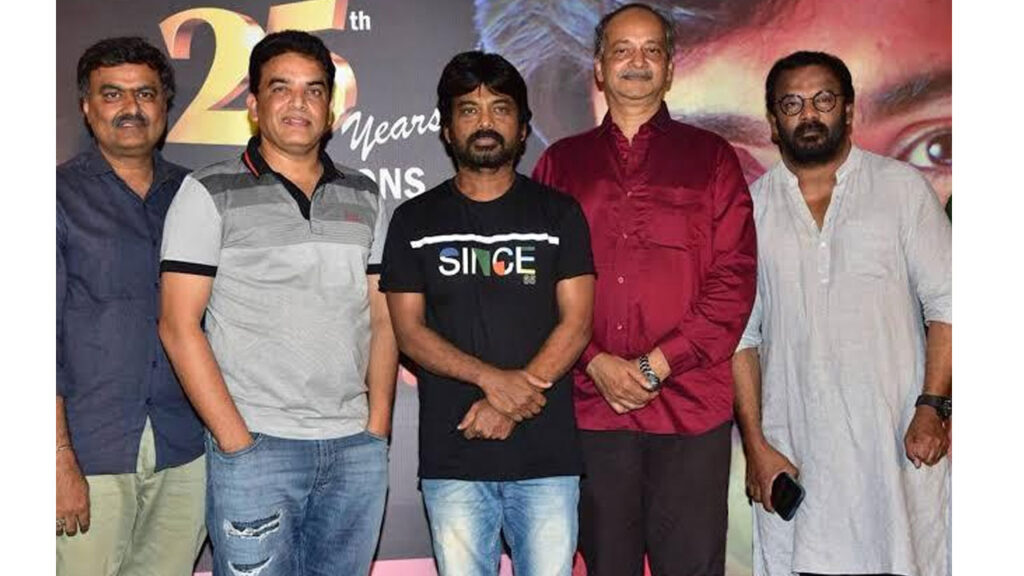
After the success of ‘Pelli Pandiri’, I partnered with Sudhakar Reddy (actor Nithiin’s father) and distributed four to five films.
My next big one was ‘Tholi Prema’, starring Pawan Kalyan. I met producer GVG Raju and, through him, Pawan Kalyan. I followed the film’s shoot from Chennai to Hyderabad and eventually bought the Nizam rights for ₹72 lakhs.
The profit? ₹2.8 crore. That was massive at the time, and I never looked back.
In those days, distribution meant outright rights—profit or loss was entirely ours.
During this phase, another partner named Giri joined me. However, Shirish and Lakshman didn’t like that move.
Six Months. Three Superhits.
We started our own office in Nizam in 1999, naming it Sri Venkateswara Film Distributors.
Our first film was ‘Oke Okkadu’ starring Arjun and Manisha Koirala, directed by Shankar and produced by AM Rathnam.
Then came ‘Sakhi’ with Madhavan and ‘Nuvvu Vastavani’ with Nagarjuna. Despite Nagarjuna’s previous flops, I had seen the Tamil version and liked it. RB Chowdhary was the producer.
All three films were big hits. In just six months, we had delivered three successes, and from then, we never looked back.
We followed it up with major hits like ‘Kushi’, ‘Murari’, and ‘Nuvvu Naaku Nachav’. After opening this office, we maintained a 90% success rate.
First step as a producer
We had bought the rights to a film called Neti Gandhi, directed by EVV Satyanarayana. The movie had already received negative talk in its first week, but I trusted EVV’s track record. I watched the film at Devi Theatre the night before its morning show release — I was totally disconnected and disappointed after watching it. I had invested ₹1.80 crore into that film.
That day, while waiting till the morning show, a thought crossed my mind: “Why not produce our own films instead of buying rights blindly?” That idea took root.
We even arranged a writer and began developing a story — but it didn’t click. While we were still thinking, Aadi was released. NTR was the lead, VV Vinayak the director. I watched a scene and was impressed. I immediately gave ₹3.03 lakhs to Vinay and asked him to do a film for us.
Scrapped One Script, Gained a Superhit
Aadi turned out to be a blockbuster. Vinayak then directed Chennakesava Reddy with Balakrishna, which was also a hit. After that, he came to us with a script that had two lead characters.
We thought of casting Nithiin as one of them — I had seen the Jayam posters and I already knew Sudhakar Reddy very well. We even began shooting and completed a fight sequence.
But doubts crept in. Vinayak then suggested scrapping the idea and coming up with a fresh concept.
He booked tickets to Vizag and asked me to come along. At Park Hotel, Vizag, Vinay narrated a new story. It was the first time I sat through a proper story narration. I learned so much in those few days.
After hearing it, I had a few doubts but was excited overall. We sat and worked through everything — Vinay, Sukumar, Vasu Varma, Vema Reddy, and I.
Vinay’s brother was getting married, so he went to Rajahmundry. I stayed back with the assistant directors and we worked on the story. I contributed, noted points, and slowly started getting a grip on script writing and story sense.
That’s how Dil was born — my first film as a producer. And it turned out to be a massive blockbuster.
The Arya story
We were four people then — me, my brothers Shirish and Lakshman, and Giri. But after Dil, Giri started feeling insecure and decided to go solo. He went on to produce Andhrawala with NTR and Puri Jagannath.
We didn’t object to his decision — we respected it. After he left, I wanted to back fresh talent and newcomers. That’s when Arya happened — with Allu Arjun and Sukumar making his debut.
It turned out to be another blockbuster, and from there, I never looked back as a producer.
From Cute Raju to Dil Raju
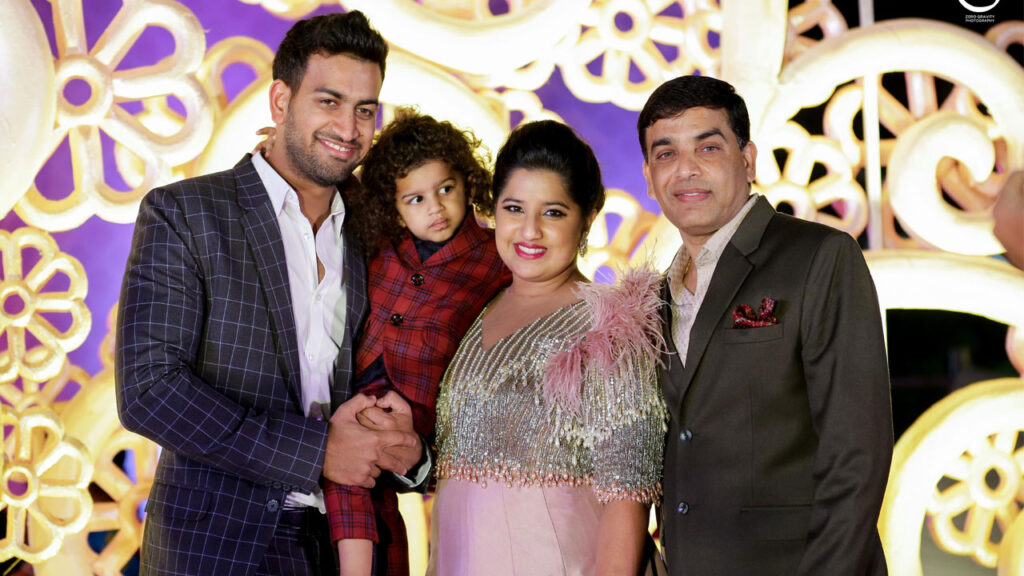
As a kid, I was cute — so everyone used to call me Raju. Even in school, friends called me Raju. The title Dil was originally owned by Burugupalli Sivaramakrishna — I requested him and got it for our film.
At the time, there were already many Rajus in the industry — MS Raju, Vizag Raju, etc.
So, media and industry people started calling me “Dil Raju” to differentiate. And the name stuck.
From the beginning, I always tried to watch a film or hear a story as an audience member, not just as a producer. I prefer watching films in theatres to get the real audience pulse.
The Golden Run
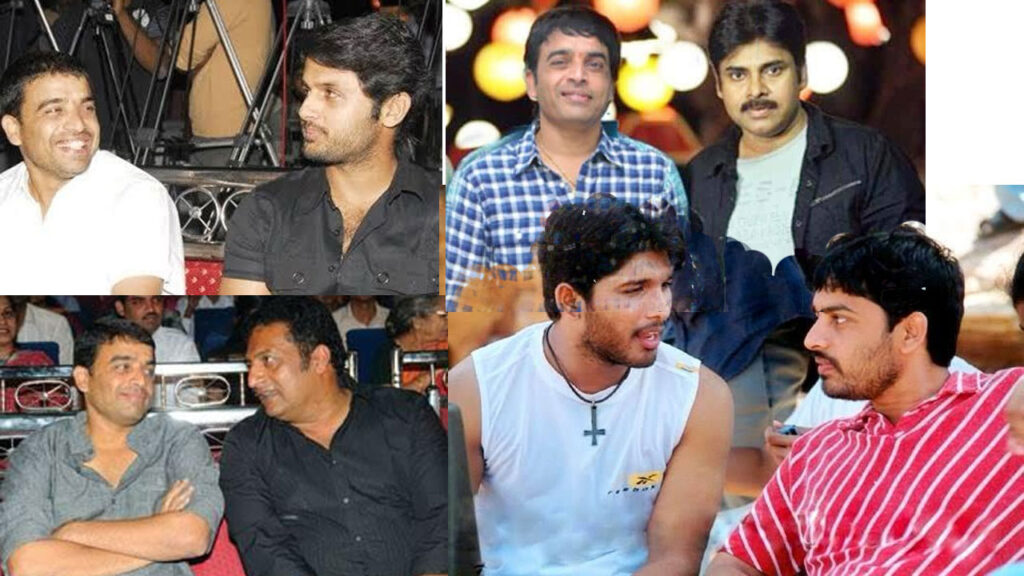
After Dil, I decided on Arya with Allu Arjun. Around the same time, Bunny (Allu Arjun) told me he had heard a story from Boyapati Srinivas, who was then a co-director with Mutyala Subbaiah.
I told Sukumar that if Dil works, I’ll do Arya with him — and I did.
Then I told Boyapati, if Arya succeeds, I’ll do a film with him — and that became Bhadra.
Since Ravi Teja was close to me from our distribution days (Idiot, etc.), I brought him on board. Bhadra also turned out to be a big success.
So, my banner delivered a hat-trick of hits — Dil, Arya, and Bhadra.
Losing my biggest support system
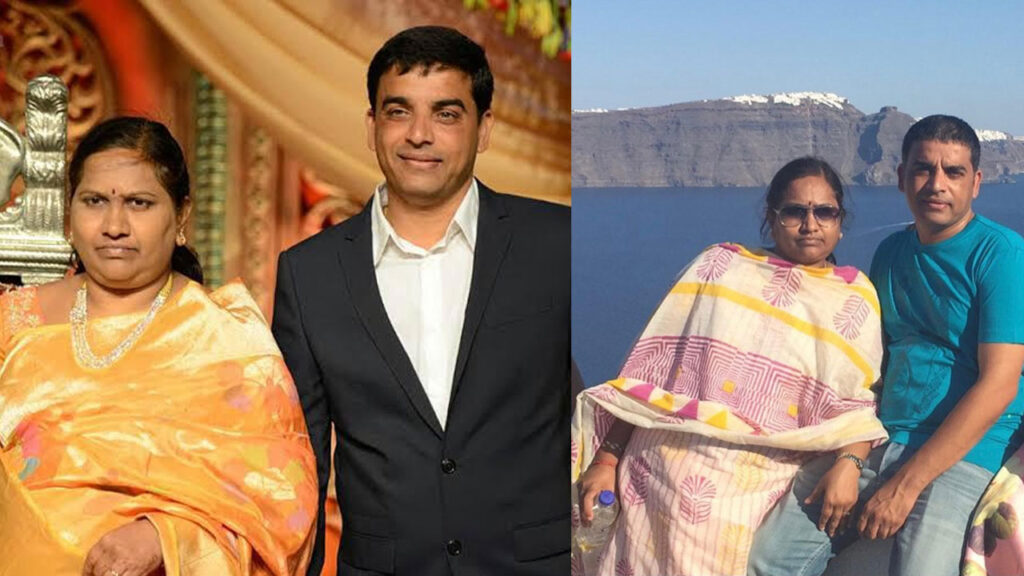
My journey with Anitha was beautiful — we were together for 27 years. She was my support system. From my very first film, I credited her name on the title cards.
After long days of stressful work, going home to my wife and daughter was my biggest relief. She played a huge role in my life and success.
But on March 11, 2017, she passed away. It was a devastating moment.
Still, I believe in Karma. I trust God. He gives and takes for a reason. That faith helped me hold on.
Love checked in—Again
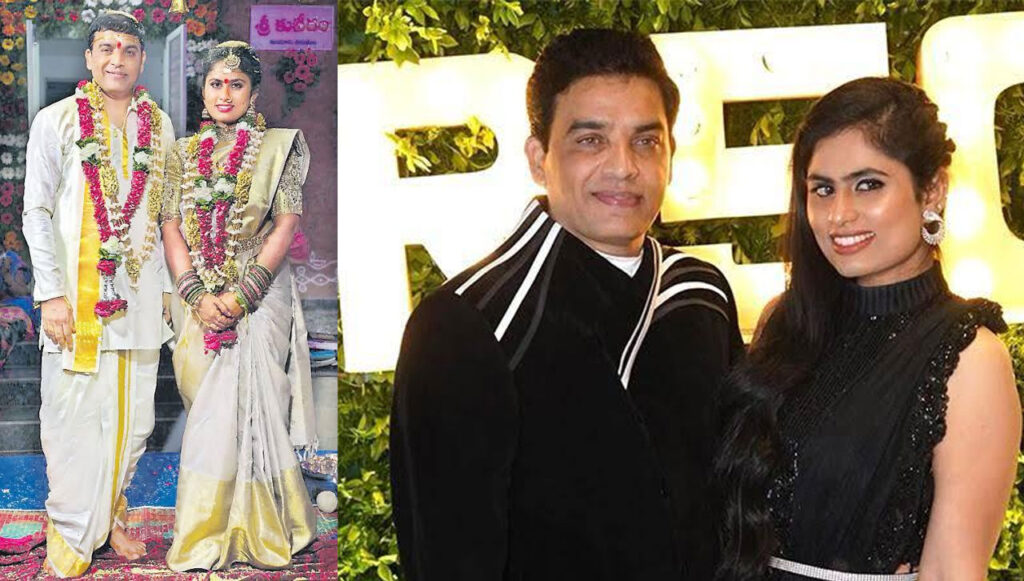
After Anitha’s death in 2017, I was emotionally disturbed. I also had work stress — six films were releasing back-to-back and I was constantly busy for the next two years.
By 2019, I was stable again. But I was already a known person, so I thought, if I ever consider remarriage, it should be with someone either from a celebrity family or someone completely unknown to the limelight.
I felt that if the girl comes from a known family, ideologies might clash, and I’m a complete family man.
I first saw and met Tejaswini at Shamshabad Airport — at the Indigo counter. We got talking and something just clicked.
I explained everything about my life, my family, the age gap, and all other aspects. We took time to understand each other. Once we were sure, we approached our families.
She is a Brahmin from a large family in Secunderabad. After a few meetings, we convinced them.
Most importantly, my daughter Hansita supported me wholeheartedly. I had decided that if my daughter had any objection, I wouldn’t go ahead with the marriage.
One of my close friends from the USA advised me, “If your daughter is okay, don’t worry about society. This is your life.”
That gave me strength.
We got married in 2020. Now, we also have a child together.


